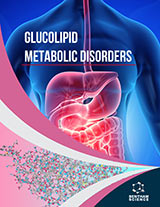Abstract
Around 2.5% of persons will experience obsessive-compulsive disorder (OCD), which has a significant morbidity. About 70% of individuals might have significant symptom relief with the correct medicine. Pharmacological therapy is based on a class of drugs called selective serotonin reuptake inhibitors (SSRIs). They are frequently given in higher doses and for longer durations compared to depression. Unfortunately, remission is not common. Second-line therapy that combines tricyclic clomipramine with low-dose neuroleptics is successful. For patients who are resistant to effective therapies, several augmentation procedures have been investigated, although they have not yet received strong support from controlled research. Psychotherapy and medication are frequently combined, however, thorough research has not shown that there are any synergistic benefits for adult patients. According to neuropsychological research, the development of OCD and cognitions is influenced by an imbalance in activity between the fronto-striatal circuitry's direct (excitatory) and indirect (inhibitory) pathways. A variety of anxiolytic qualities have been found in substances derived from plants that have been tested for various mental diseases. We did a detailed analysis of the pharmacological and clinical evidence of herbal medications and phytochemicals with anti-obsessive-compulsive properties using the electronic databases PubMed, Scopus, etc. to find out the status of the relevant research. The review is focused to identify the neurotransmitters involved in OCD along with the diagnostic biomarkers so as to identify the disease at an early stage and provide safe and effective pharmacotherapy. The findings showed that a number of plant remedies, comprising Withania somnifera, Silybum marianum, Echium amoenum, Crocus sativus, and Hypericum perforatum, as well as a number of natural compounds, including crocin, cannabidiol, and curcumin, have tentative low-quality evidence. The most important anti-OCD mechanism, according to existing pre-clinical studies and the need for more research to confirm its efficacy, may include manipulating the monoamine system, notably serotonin reuptake inhibition.
Keywords: Obsessive compulsive-disorder, Biomarker, Interleukin, Neurological disorder, Pharmacotherapy, Neurotransmitter.
[http://dx.doi.org/10.1016/j.neubiorev.2011.04.006] [PMID: 21527287]
[http://dx.doi.org/10.1007/s00213-010-1808-9] [PMID: 20238210]
[http://dx.doi.org/10.1016/j.bbr.2005.02.017] [PMID: 15922059]
[http://dx.doi.org/10.1186/s12863-021-00993-0] [PMID: 34717534]
[http://dx.doi.org/10.1016/j.tics.2011.11.003] [PMID: 22138231]
[http://dx.doi.org/10.1017/S0954579408000606] [PMID: 18838041]
[http://dx.doi.org/10.1016/0166-2236(89)90074-X] [PMID: 2479133]
[http://dx.doi.org/10.1038/tp.2017.189] [PMID: 28850108]
[http://dx.doi.org/10.3389/fnhum.2012.00259] [PMID: 23015786]
[http://dx.doi.org/10.1016/j.pharmthera.2011.09.006] [PMID: 21963369]
[http://dx.doi.org/10.1016/j.neubiorev.2007.09.005] [PMID: 18061263]
[http://dx.doi.org/10.1017/S1461145701002681] [PMID: 12057027]
[http://dx.doi.org/10.1192/bjp.bp.108.055046] [PMID: 19880927]
[http://dx.doi.org/10.1001/archgenpsychiatry.2010.70] [PMID: 20603451]
[http://dx.doi.org/10.1038/npp.2009.128] [PMID: 19759530]
[http://dx.doi.org/10.1093/med/9780190228163.003.0025]
[http://dx.doi.org/10.1001/archpsyc.1988.01800260095012] [PMID: 3337615]
[http://dx.doi.org/10.1016/0006-3223(85)90176-3] [PMID: 2413912]
[http://dx.doi.org/10.3389/fnins.2020.608520] [PMID: 33343291]
[http://dx.doi.org/10.1523/JNEUROSCI.6028-09.2010] [PMID: 20592211]
[http://dx.doi.org/10.1586/ern.09.148] [PMID: 20136383]
[http://dx.doi.org/10.1016/S0306-4522(97)00412-0] [PMID: 9483561]
[http://dx.doi.org/10.1111/j.1600-0447.2009.01370.x] [PMID: 19291081]
[http://dx.doi.org/10.1016/S0021-9258(18)96782-7] [PMID: 4222879]
[http://dx.doi.org/10.1038/nrn919] [PMID: 12209120]
[http://dx.doi.org/10.1038/sj.npp.1300733] [PMID: 15841109]
[http://dx.doi.org/10.1067/mcp.2001.113989] [PMID: 11240971]
[http://dx.doi.org/10.3390/biomedicines10071760] [PMID: 35885064]
[http://dx.doi.org/10.1080/14737159.2020.1731306] [PMID: 32066283]
[http://dx.doi.org/10.1136/ebmental-2018-300014] [PMID: 30006442]
[http://dx.doi.org/10.1016/j.neubiorev.2020.08.008] [PMID: 32866526]
[http://dx.doi.org/10.1016/j.cpr.2013.09.004] [PMID: 24128603]
[http://dx.doi.org/10.1016/j.psychres.2014.11.058] [PMID: 25613661]
[http://dx.doi.org/10.1016/j.jpsychires.2012.08.020] [PMID: 22999486]
[http://dx.doi.org/10.1176/appi.ajp.2007.07091440] [PMID: 18316422]
[http://dx.doi.org/10.1038/tp.2017.192] [PMID: 28872637]
[http://dx.doi.org/10.3389/fpsyt.2015.00074] [PMID: 26042054]
[http://dx.doi.org/10.3389/fpsyt.2021.568932] [PMID: 33868034]
[http://dx.doi.org/10.1016/S0006-3223(02)01552-4] [PMID: 12437939]
[http://dx.doi.org/10.1017/S1352465804001353]
[http://dx.doi.org/10.1016/j.brat.2009.11.010] [PMID: 19969286]
[http://dx.doi.org/10.1176/ajp.152.3.441] [PMID: 7864273]
[http://dx.doi.org/10.1177/001872676601900301]
[http://dx.doi.org/10.1016/0010-440X(92)90030-T] [PMID: 1591912]
[http://dx.doi.org/10.1016/0005-7967(91)90012-R] [PMID: 1759961]
[http://dx.doi.org/10.1016/j.jbtep.2007.11.004] [PMID: 18295186]
[http://dx.doi.org/10.1186/s12888-014-0214-y] [PMID: 25085317]
[http://dx.doi.org/10.3389/fpsyt.2020.00055] [PMID: 32184741]
[http://dx.doi.org/10.1016/S1042-3680(03)00005-6] [PMID: 12856488]
[http://dx.doi.org/10.3171/2014.11.JNS132618] [PMID: 25635480]
[http://dx.doi.org/10.3171/2010.4.FOCUS10107] [PMID: 20672912]
[http://dx.doi.org/10.1016/S0140-6736(99)02376-4] [PMID: 10551504]
[http://dx.doi.org/10.1016/j.neuroimage.2010.03.009] [PMID: 20226259]
[http://dx.doi.org/10.1016/j.wneu.2012.10.006] [PMID: 23044000]
[http://dx.doi.org/10.1038/nn.3344] [PMID: 23434914]
[http://dx.doi.org/10.1016/j.nicl.2021.102640] [PMID: 33799272]
[http://dx.doi.org/10.1016/j.nicl.2018.08.020] [PMID: 30186762]
[http://dx.doi.org/10.1017/S1092852916000286] [PMID: 27268576]
[http://dx.doi.org/10.1017/S1461145711001829] [PMID: 22226028]
[http://dx.doi.org/10.1007/7854_2020_204]
[http://dx.doi.org/10.1097/00004850-199210002-00007] [PMID: 1484177]
[http://dx.doi.org/10.1111/j.1600-0447.1997.tb09927.x] [PMID: 9395151]
[PMID: 19300574]
[http://dx.doi.org/10.1097/00004583-200107000-00011] [PMID: 11437015]
[http://dx.doi.org/10.4088/JCP.v64n0508] [PMID: 12755657]
[http://dx.doi.org/10.1111/j.1440-1819.2004.01278.x] [PMID: 15298657]
[http://dx.doi.org/10.1503/jpn.150100] [PMID: 26290064]
[http://dx.doi.org/10.1017/S1092852912000065] [PMID: 24726048]
[PMID: 19204653]
[http://dx.doi.org/10.4088/JCP.16cr11234] [PMID: 28448699]
[http://dx.doi.org/10.1089/cap.2016.0190] [PMID: 28358599]
[http://dx.doi.org/10.1002/ptr.6656] [PMID: 32124509]
[http://dx.doi.org/10.1155/2021/6661514]
[PMID: 29062366]
[PMID: 20635538]
[http://dx.doi.org/10.3389/fpsyt.2020.00681] [PMID: 32848902]
[PMID: 33305718]
[http://dx.doi.org/10.4088/JCP.v61n0806] [PMID: 10982200]
[http://dx.doi.org/10.3109/13880209.2015.1014923] [PMID: 25885941]
[http://dx.doi.org/10.3390/antiox11020353] [PMID: 35204235]
[http://dx.doi.org/10.1016/j.ctim.2016.03.018] [PMID: 27515872]
[http://dx.doi.org/10.2202/1553-3840.1465] [PMID: 22718671]
[http://dx.doi.org/10.4103/0974-8490.79118] [PMID: 21731398]
[PMID: 26445709]
[http://dx.doi.org/10.1016/j.pnpbp.2009.12.016] [PMID: 20035818]
[http://dx.doi.org/10.1097/JCP.0000000000000327] [PMID: 25874918]































